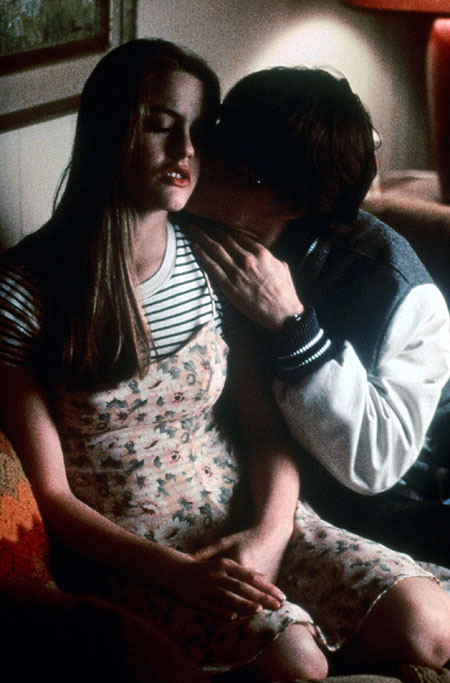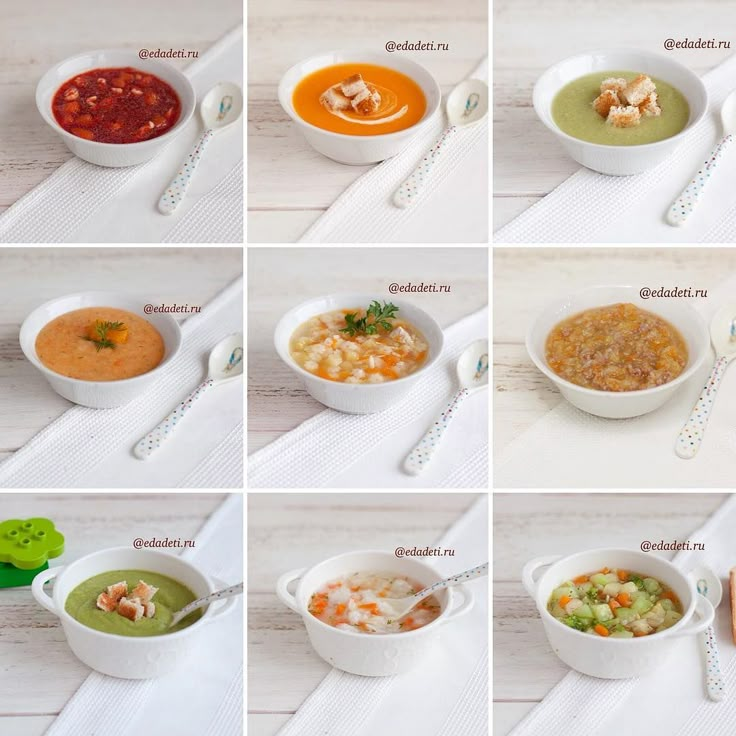Baby spitting food out
Tips to Solve Common Eating Issues
When you’re feeding a child, serving 3+ meals per day, struggles are inevitable. It’s common to have minor hiccups along the way, and many times you can move past them with a few simple changes. Whether it’s difficulty chewing or biting, overstuffing, pocketing, or food throwing, you are not alone.
Today, I’m here to help solve 6 common eating challenges.
- My child isn’t chewing her food.
Babies begin with a simple up and down reflexive motion of their jaw that comes under their own control between 5 and 9 months. From there, they advance to a diagonal jaw movement starting around 7 to 9 months, and later to a circular movement, which is fully developed by about 24 months. Watch for your child to increase the number of chews, size, and rhythm, and to advance from up and down to eventually a circular jaw movement by age 2.
Chewing skills starts with mouthing. If your baby doesn’t put teething toys or tools in her mouth yet, or your child never did that, start there. Give her a variety of stick-shaped teething toys, like the Dr. Brown’s® Nawgum™, to chew on daily. If she won’t put it into her mouth on her own, help her. Our goal is to place these tools between the gums or molars on the sides of her mouth.
If your child won’t chew on a teething toy or tool:
- Bring this to your child’s mouth and wait for her to open and accept it. This should be enjoyable and should not feel forced. Try singing, playing games, and moving up from her hands, arms, and shoulders toward her mouth. Once she will allow it in her mouth, place it on her gums in the molar area. Hold it between her gums and wait for her to bite down. If she won’t bite, give a little gentle downward pressure to her lower gums and upward pressure to her upper gums.
If your child is chewing on teething toys and tools, but won’t chew food, try these strategies:
- Dip stick-shaped teething tools in puree, roll tools in a soft smashable solid (like avocado or banana), or roll in crumbs of a meltable solid (only with this texture after she is crawling), and help your child place this on her molar area for chewing.
 As described above, hold the tool between her gums and wait for her to bite down. If she won’t bite down, apply a little gentle downward and upward pressure to her gums.
As described above, hold the tool between her gums and wait for her to bite down. If she won’t bite down, apply a little gentle downward and upward pressure to her gums. - Offer stick-shaped foods that are soft (starting after she is sitting up) and meltable (after she is crawling). When you offer these foods, guide her to put them between her molars. By placing between the molar areas, your child will naturally learn to bite and chew with her teeth vs. smashing with her tongue.
- Once your child is crawling (around 8 to 9 months), place small pieces of soft smashable solid (a small cube of soft fruit or vegetable about the size of your pinky fingernail that you can easily squish between your fingers) or a meltable solid (a small piece of a dissolvable puff) between her gums on the sides. When you place a piece of food to the side, she will bite down, and will shift her tongue to the side you place the food. When she shifts her tongue, her jaw will shift, advancing her chewing skills.
 Alternate sides to teach the back and forth motion of the tongue and jaw.
Alternate sides to teach the back and forth motion of the tongue and jaw.
- My child won’t bite into bigger pieces of food.
Babies are typically able to take a controlled bite from a soft solid beginning between 7 and 12 months.
Teaching a child to take bites and to chew also starts with mouthing. If your child hasn’t done that or if he skipped that step, start there.
Once your child is regularly mouthing and chewing on tools, help him to learn to bite by offering stick-shaped foods. If he needs help, guide these over to his molar area to take bites.
If your child is chewing tools regularly, but is still not biting pieces off:
- For a baby or younger child, offer a stick-shaped food and hold it for your child very close to the top, so he is only able to bite off beyond your fingers.
- For an older child, make a line on the food so your child can see where to bite. You can use a toothpick to draw a line, or a fork to make a dotted line.
 I like to tell kids these are the teeth marks, and then ask them to bite on the teeth marks.
I like to tell kids these are the teeth marks, and then ask them to bite on the teeth marks. - Teach your child about bite size. You can show a picture of a mouse and tell him that a mouse “takes small bites” and a picture of a lion who “takes very big bites.” Talk your child about the best bite size for his mouth, and then rehearse by having him identify mouse vs. lion bites on himself and you.
- My child is overstuffing her mouth.
First, work on improving your child’s oral awareness (the ability to understand and feel food in her mouth, and the borders of the inside of her mouth). Children learn this through mouthing, typically by 5 to 9 months.
- Help your child improve her oral awareness by brushing inside her mouth (on the top and sides of his tongue, inside her cheeks, and along her gums) with a finger brush or child sized toothbrush. Do this with tooth brushing and/or just prior to meals to wake up her mouth and get her ready to eat.
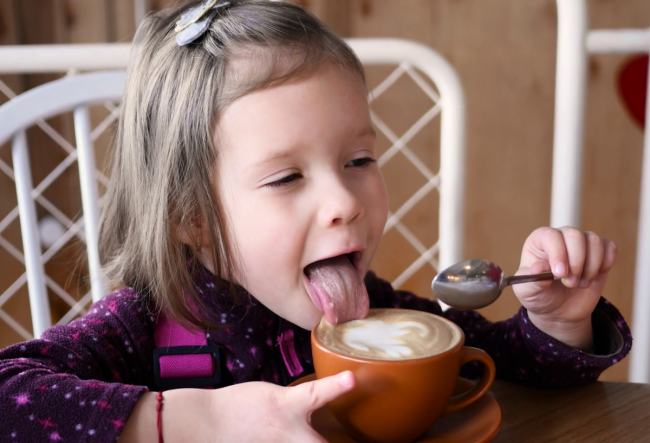
- Just prior mealtime while you are preparing a meal, give your child a stick-shaped teething tool for chewing practice. Make this part of your mealtime routine.
While your child is working on improving oral awareness and sensation in the mouth, help her to learn to take small bites by only offering just 1-2 bites on her plate at a time. It sounds simple, but most of the time, we just need to break the habit and allow the child to practice this skill. Keep her full serving of food over to the side, and add new bites to her plate as she eats.
For an older child, talk about small bites one at a time, and use pictures (like the lion and mouse described above) to help her understand the difference.
For any age child, offer foods with stronger flavors. These provide more sensation in the mouth. When a child can feel the food, she’ll be less likely to overstuff.
- My child pockets food in her cheeks.
With pocketing, I’d recommend the same strategies as described above with mouth stuffing. Start with the mouthing, brushing, and chewing practice. Again, the key here is oral awareness and that starts in infancy with mouthing.
Start with the mouthing, brushing, and chewing practice. Again, the key here is oral awareness and that starts in infancy with mouthing.
With pocketing, again offer 1-2 bites on the tray at a time, but this time also offer a cup of cold water for sips between bites. Cold water is best because it can increase sensation and be alerting for a child’s mouth. Practicing sips between bites will get the child accustomed to the feeling of a clean mouth.
Teach an older child to use her tongue to clean her mouth between bites. Show her how you move your tongue to the side and then push it into your cheeks to clear food out. I like to tell a child that the tongue is like a broom, cleaning the food around the mouth. Cue your child to “use your broom” when you notice pocketing. You can also provide a touch cue to the outside of a child’s cheek to remind her to move her tongue to that side.
Use a mirror with meals or snacks every once in awhile. You can keep a small handheld mirror at the table, or move your table so a mirror is across from your child. Cue your child to look in the mirror to “make sure your mouth is all clean” between bites. If your child’s oral sensation is reduced, this visual cue will be very helpful.
Cue your child to look in the mirror to “make sure your mouth is all clean” between bites. If your child’s oral sensation is reduced, this visual cue will be very helpful.
- My child throws food during meals.
First, take a look at which foods your child is throwing and when. Is your child full and then begins throwing? Is he throwing a food he doesn’t like? Does he do this when his plate is full and he’s overwhelmed? If you can get to the bottom of why this is happening, then you can solve this struggle. If you’re unsure, try a combination of methods and see what works for your child.
Here are 4 reasons why food throwing occurs and how to help:
- If your child does not want to eat a particular food:
- Give your child a place to put the food. Use an “all done” Place a small bowl next to your child’s plate. When he starts to throw the food, re-direct him to put the food into the “all done” bowl.
 Verbally cue your child, “This is the all done bowl. If you’re all done with that, put it here.” Do not push your child to eat any of the food he has placed in this container.
Verbally cue your child, “This is the all done bowl. If you’re all done with that, put it here.” Do not push your child to eat any of the food he has placed in this container.
- Give your child a place to put the food. Use an “all done” Place a small bowl next to your child’s plate. When he starts to throw the food, re-direct him to put the food into the “all done” bowl.
- If your child is full:
- End the meal. When your child throws food, take that as a cue that he is done. If you don’t feel your child is truly done yet, try giving a reminder first, “If you throw your food, that tells me you are all done. If you throw again, we will be all done.”
- If your child looking for attention:
- Many times kids will throw food if they are looking for attention, both positive and negative. Ignore the behavior and bring your focus to something positive your child is doing, something else on his plate, or a new conversation. Without any attention, the food throwing should diminish over time.
- If your child overwhelmed:
- Try removing most of the food on the plate and offering just 2-3 simple bites. Make sure the table space around your child is clear and free of clutter.
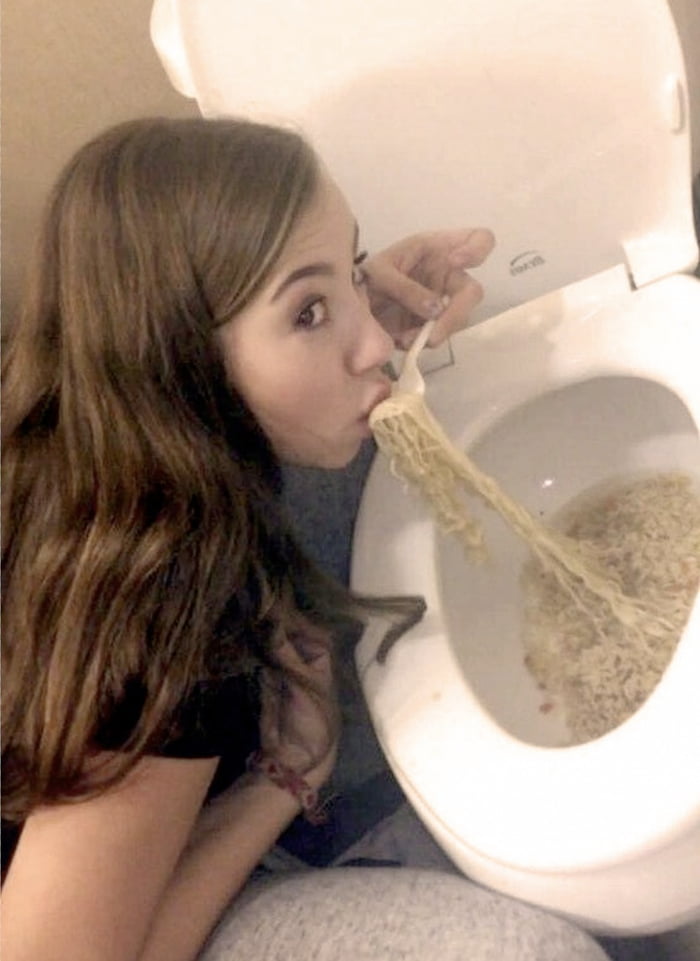
- Try removing most of the food on the plate and offering just 2-3 simple bites. Make sure the table space around your child is clear and free of clutter.
- My child chews foods and spits it out.
Chewing and spitting out food is very common for toddlers. We often see children doing this with new foods, harder to chew textures, or when they are not hungry. If it’s happening every once in awhile, or for a brief period of time, it is completely normal. However, if this persists, or your child is not swallowing any foods, then further evaluation by a professional is warranted.
If your child is chewing and spitting out food, stop the behavior by changing her focus. Offer a sip of a drink, place a different food on the tray, or start a conversation to re-direct her. If she continues to do it, then end the meal. Say something like, “I can see that you are all done, let’s clean up.” Keep it neutral and avoid making a big deal about the spitting, as this can only increase the behavior (if your child enjoys the attention they get from the reaction). I like to go with a “two strikes rule. ” As described above, if your child continues after two attempts to re-direct or change things, then the meal is done.
” As described above, if your child continues after two attempts to re-direct or change things, then the meal is done.
If you notice your child is always spitting a certain texture, make that texture easier for your child to manage by chopping it smaller, cooking it down to a softer consistency, or by adding a dip or sauce to soften it.
No matter the struggle, you are not alone in this. Feeding challenges are common, especially in the toddler years. Sometimes the simplest changes can make all the difference.
If you’re finding yourself overwhelmed, these challenges are impacting your child’s health and wellness, or they are not going away, seek out a Clinical Feeding Evaluation with a Speech-Language Pathologist or Occupational Therapist. During this appointment, the professional will watch your child eat and drink, and will give your personalized recommendations and treatment plan.
ChiKids Speech & Feeding offers home-based, in-person Feeding Evaluations and Treatment for families in the Chicagoland area, as well as virtual options for families across the US.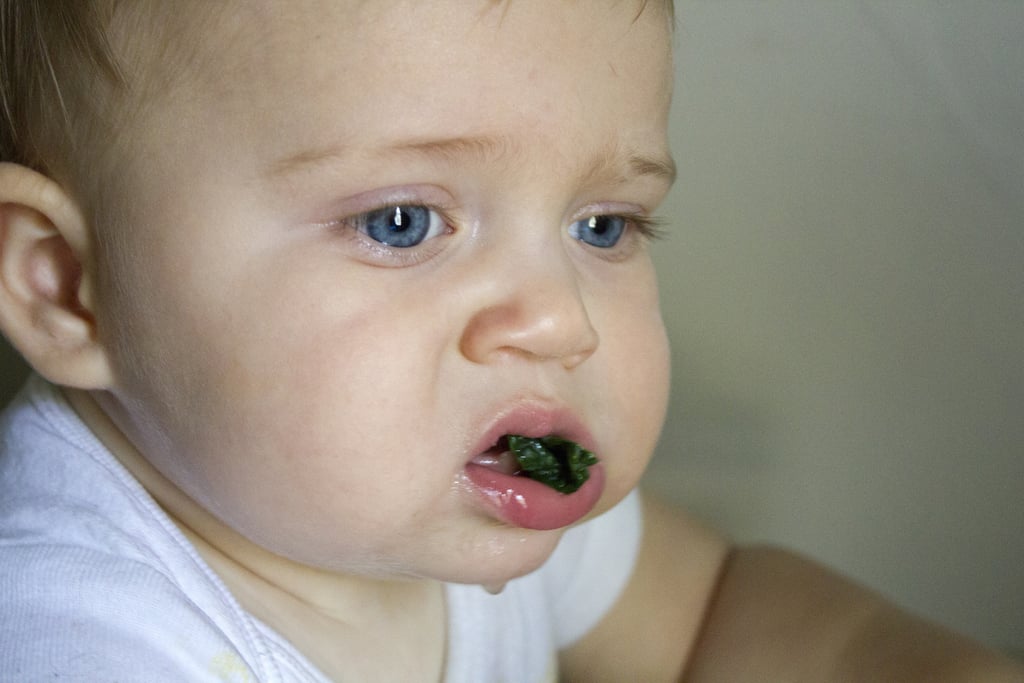 To learn more, head to chikidsfeeding.com or @chikidsfeeding on Instagram.
To learn more, head to chikidsfeeding.com or @chikidsfeeding on Instagram.
About the author:
Catherine Callahan, MS, CCC-SLP, CLC
ChiKids Speech & Feeding, LLC
chikidsfeeding.com
@chikidsfeeding
Catherine is a speech-language pathologist, pediatric feeding specialist, certified lactation consultant, and mom of three. She resides in Chicago, where she works at a top 10 US Children’s Hospital and owns her own business, ChiKids Speech & Feeding, LLC. In her private practice, Catherine offers in-home and virtual feeding evaluations and treatment for local infants and children; and through her social media and blog, she shares everyday feeding strategies and supports families and professionals across the globe.
Why Your Baby Spits out Food and What to do about it!
Your baby isn’t spitting out food to make you crazy, it’s happening for a reason. Learn why and how to help them learn to keep it in their mouth!
At first it seemed normal, they’re learning to eat after all.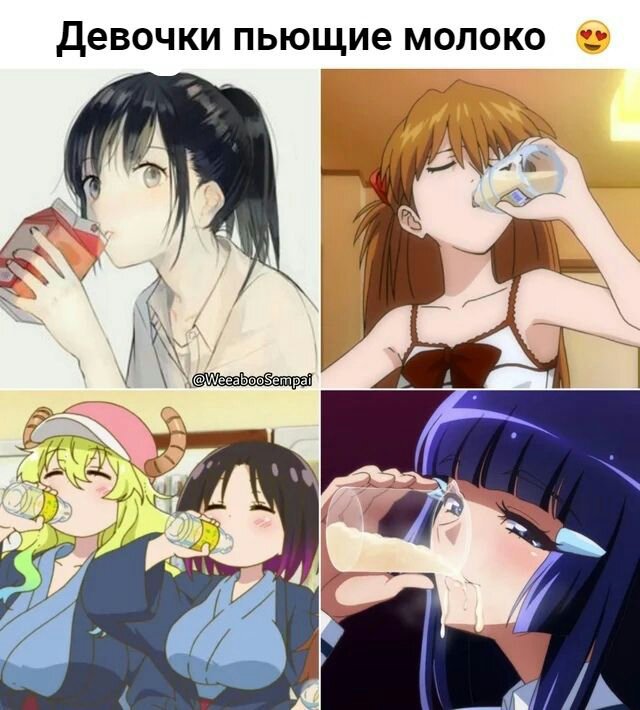
The little puff, green bean, or cheese just slipped out of their mouth over and over again. At first, you were patient because they never ate anything before and obviously they were trying. But, as days and weeks went on, and your baby got older and bigger, the spitting out of food continued.
Maybe it seemed like it was even on purpose. Like they were actively trying to push it out.
Or, maybe it seemed like they didn’t care or didn’t even seemed to notice.
Either way, you’re getting worried because at some point, your baby needs to eat, they can’t live on your milk or formula forever.
This may sound like an unusual problem, but as a feeding therapist, it’s something I see all the time. When your baby spits out food all the time, they certainly aren’t being bad or trying to make you crazy. There is a reason and a way to move past it too!
When Should My Baby Be Able to Eat Real Table Foods Well?
It’s normal for babies to inadvertently lose a piece of food here and there and have it pop back out of their mouth. They are figuring out how to move their tongue, mouth, and jaw around together and sometimes food ends up falling out.
They are figuring out how to move their tongue, mouth, and jaw around together and sometimes food ends up falling out.
Most babies learn to eat table foods around 8-10 months old and we look for them to be eating table foods well from 10-14 months old.
As a feeding therapist, I look for babies to be keeping most of the food in their mouth by 10 months old. As with all milestones, there are a lot of factors, such as adjusted age of premature babies, and any other developmental delays that can affect that number though.
Oh No, Are They Behind?!
I share those ages here because I think all too often, parents are told to “just wait and see”. And, there is a time for that, but it’s also important to know when you need to start addressing a potential issue that could make it difficult for your child to learn to eat.
So your child isn’t necessarily behind, but if they are consistently having food fall out of their mouth at 9-10 months old and you’ve been trying for a few weeks or months, it is a sign that they need a little help.
Because, unfortunately for some babies, when they don’t get the hang of chewing and swallowing their food, it can lead to all sorts of feeding trouble, namely picky eating.
Ugh, Why Does My Baby Keep Spitting Out Food?
But, why does your baby or toddler keep spitting food out in the first place? Well, there are a few different reasons:
1. Oral motor skills – In my work, this is the most frequent reason babies spit out food. Oral motor is a fancy therapy way of saying coordinating the muscles in the mouth. Just like a 5 year old needs his fingers to tie his shoes well, a baby needs his tongue, cheeks, lips, and jaw to eat well. Sometimes it can be difficult to coordinate, and sometimes, it’s a lack of strength because the tongue is a giant muscle.
There are a ton of reasons why kids could have difficulty with oral motor skills, but what’s important to know is that if you see your child accidentally having food fall out of their mouth, this is likely the culprit.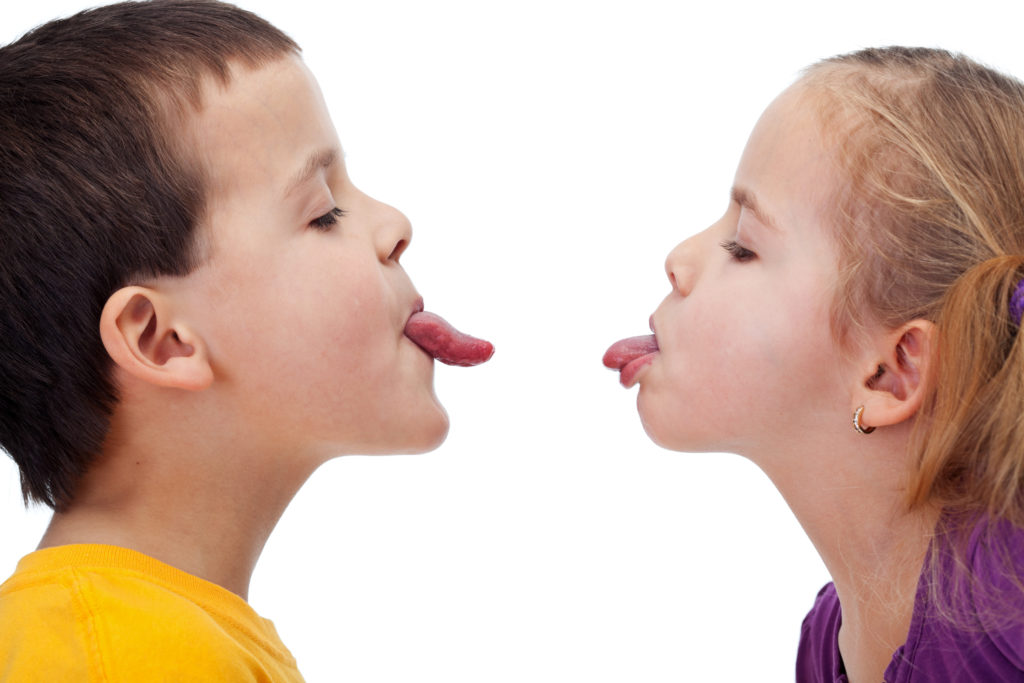
Also, when your child seems not to chew, or mashes food with their tongue, oral motor skills can be the cause. It’s also possible that younger babies still on baby food can have a hard time pushing the pureed food back in their mouth, so instead, it just comes back out. It’s not really active spitting, but it sure can seem that way. Read more about oral motor skills.
2. Sensory processing – While there are a lot of babies and toddlers that have a sensitivity to different textures, most of them never get the food anywhere near their mouth, and if they do, they spit it out the second it touches their lips or tongue. That sensitivity they experience is a result of their sensory processing. Learn more about sensory and eating.
But, it’s still possible that your child could take a little longer to figure out if they like the taste or texture of the food. If you see your baby deliberately spitting food out of their mouth, maybe even with some gagging, then their sensory processing is likely the reason behind the frequent spitting food out.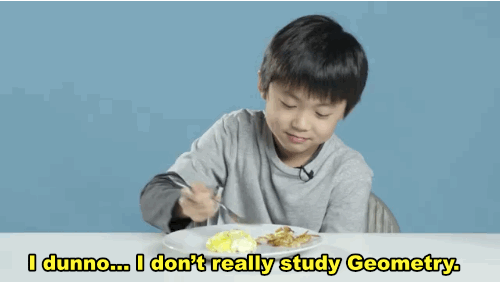
3. Normal spitting – And, of course, some babies have learned that they get a whole lot of attention when they spit their food out. They also could simply decide they can’t chew through a piece of chicken or feel that the watermelon was too big of a piece. In any of these cases, you’ll see your baby spit food out at you.
However, in this last instance, it’s not a pattern that’s repeated 100% of the time.
Most of the time, when a baby has food they’re spitting out or that’s falling out of their mouth all the time, it’s because of their oral motor skills.
Affiliate links used below. See our full disclosure.
What to Do When Your Baby Spits Out Food
When your baby is consistently spitting out food, it can be super overwhelming! If your baby is over 10 months old, it’s a good thing to ask your doctor about feeding therapy or look into it yourself, but there are some powerful strategies you can use at home too!
The first is to start using a toothbrush on your babies gums a couple of times a day. It sounds strange, but that toothbrush actually causes your baby’s tongue to move around. And, that actually helps to strengthen it!
It sounds strange, but that toothbrush actually causes your baby’s tongue to move around. And, that actually helps to strengthen it!
Another idea is to give them teethers and other safe toys that they can practice chewing on. This helps to strengthen the tongue, but also the jaws, cheeks, and lips because they mouth on those toys and move them in all sorts of ways. This is one of my favorite teethers to use!
Lastly, you also want to push the food back in their mouth, just as it’s about to fall out. As you do that, push it firmly back on to their gums, and after they chew for a few seconds, you can experiment with giving them a sip of water or milk to see if that helps them swallow it down. Of course, you WON”T want to do that if you notice the food they spit out is never chewed because then it could be a choking hazard.
More Help for Babies and Toddlers That Spits Out Food
Those tips are a great start, but there’s a lot more where they came from! If your baby needs help with learning to eat table foods, then you’ll want to scoop up this free printable cheat sheet:
Click here to get the Free Learn How to Eat Table Foods Printable
I’ll send it right to your inbox! You’ll find my step by step tips to help your baby get on the road to eating well.
More on Table Foods for Babies and Toddlers
How to Transition Your Baby (or Toddler) to Table Foods Easily and Safely
Mega List of Table Foods for Your Baby or Toddler
When Can Babies Eat Cheerios, Puffs, & Other Foods Safely – Answered!
6 Tips to Get Babies and Toddlers to Stop Throwing Food!
Alisha Grogan is a licensed occupational therapist and founder of Your Kid’s Table. She has over 14 years experience with expertise in sensory processing and feeding development in babies, toddlers, and children. Alisha also has 3 boys of her own at home. Learn more about her here.
Why is the child spitting out food? How to wean?
Communication
mira
more than a year ago
Started to feed the child from 6 months with different purees and cereals. As the child turned 1 year old, I give fruits chopped finely. When she started to feed such food, she only eats a couple of spoons, and then chews in her mouth and spits it out. Sometimes the child completely ate what you give. Now the child is 1.7. Now I give small pieces of fruit. But also sometimes will eat everything, but mostly chews and spits out. How to wean not to spit? Am I giving my child too much fruit? nine0003
Sometimes the child completely ate what you give. Now the child is 1.7. Now I give small pieces of fruit. But also sometimes will eat everything, but mostly chews and spits out. How to wean not to spit? Am I giving my child too much fruit? nine0003
like
subscribe
complain
Your answer:
Get notifications
Other topics discussed:
What to give a child to drink after a year?
I still breastfeed a little more, mostly at night, but already we eat quite actively during the day. I don't know what to drink. He refuses water, compotes are reluctant, I don’t want to give juices.
What cereals do your babies eat?
Mine started to refuse cereals completely. I don't know what to suggest to her. Please suggest any recipes/tricks. nine0003
The child has poor appetite, what should I do?
My daughter is 2 years old and has been eating very poorly lately. But a decrease in appetite is not a permanent phenomenon. This happens periodically. That one day she eats everything that I give in large or normal portions, and the next day or after a few she may not eat anything at all. I can feed normally only...
But a decrease in appetite is not a permanent phenomenon. This happens periodically. That one day she eats everything that I give in large or normal portions, and the next day or after a few she may not eat anything at all. I can feed normally only...
What do your children eat for breakfast?
This question has been bothering me for about 3 months... Whatever I suggest, my princess refuses to even try it! Oatmeal porridge, steamed in milk, can very rarely deign to eat, and even then, 2-3 tablespoons))) There is no semolina at all, cottage cheese is the same. I understand that we are still teething...
Do you give children "bad" food?
Hello! I try not to give my baby "harmful" food. Like sausage, canned food, smoked, chocolate ... I just think that she will have time to eat this "good" in her life))) But, my friend, she has a girl 2 months older than us, so she is 6 months old . she gave raspberries, in a year the child calmly ate onions in vinegar, smoked meats, lard !!! Well. ..
..
Other sections:
Health
Nutrition
Development
Education
Kindergarten
Shopping
Children's sleep is very useful...
for parents' nervous system!
V-DOME-DETI.RU
I like it
What are the children talking about?
Pulling Sonya (5 years old) by the pigtail. She:
Don't pull my braid.
- This is my braid.
Sonya:
— No, mine.
- I gave birth, so it's mine.
— You bore her to me.
Last activity
Daria963 posted a message in the topic "Double hanger Gromell kelapa, v. need reviews"
Elizaveta147 posted a message in the topic "Double hanger Gromell kelapa, v. need reviews"
Katerina050 added a message in the topic "About Beauty club 365 Melanet have any reviews? "
Angelina_5 created a new topic for discussion "Are there any reviews about Beauty club 365 Melanet?"
Esenya posted a message in the topic "Bago home spray, share your feedback"
Irishik added a message in the topic "Chicky discharge envelope - need feedback"0003
Why is the child not eating well? 5 reasons for not eating.

Question: How to feed a child? It has been in our family for 2 years now. As soon as the eldest turned 2, he began to eat worse. It seems to me that everything happened because I did not immediately give him a wide variety of products, but gave about the same thing every week. Today he is 4 years old and it is very difficult to offer him something new. For example, his brother, who only learns the goodies of this world with pleasure and eats a lemon.
Of course, it is difficult to immediately answer the question: “Why does the child refuse to eat?” Many reasons can contribute to this, ranging from upbringing to health problems.
Pediatrician and mother of 3 sons, Alisha Grogan, identifies 5 reasons why children refuse to eat:
Medical we often overlook this. Well, at least it's not always deeply studied. There are two main culprits here: these are acid reflux and constipation . Both of these fairly common problems can put an end to the desire to eat.
 Although acid reflux is common in infants, it can also affect older children. Some kids are too young to say, others just can't put it into words.
Although acid reflux is common in infants, it can also affect older children. Some kids are too young to say, others just can't put it into words. Alisha's eldest son began to suffer from constipation at about a year old. She had to keep a close eye on how much fiber he was eating. And as soon as his body overcame this problem, he began to eat well. Learn more about severe constipation in children and acid reflux, and natural remedies for them. nine0003
Sensory
Many picky eaters are very sensitive to food . Simply put, if something doesn't taste good, feels rough in the mouth or in the hands, they won't eat it. Pediatricians say that this is a kind of tactile protection. Such a problem occurs in ordinary children quite rarely, about 10-20%. In children with autism, 60-70%.
A child with sensory perception may not like the smell, color, texture, taste of certain foods . It can even cause vomiting. Verbal disgust also fits into this category. If the baby was fed through a tube, had a medical examination, suffered from severe vomiting, or had an incident in the oral cavity, then the child may be afraid that something will go into the mouth, and he will be very sensitive in this area. A child with sensory perception often hides under the guise of a "picky eater". Understanding that a child is refusing to eat from a sensory perspective will help develop a meal plan for picky eaters. nine0003
If the baby was fed through a tube, had a medical examination, suffered from severe vomiting, or had an incident in the oral cavity, then the child may be afraid that something will go into the mouth, and he will be very sensitive in this area. A child with sensory perception often hides under the guise of a "picky eater". Understanding that a child is refusing to eat from a sensory perspective will help develop a meal plan for picky eaters. nine0003
Oral motor skills. chewing skills.
Here you need to understand how well the child chews and swallows food. Of course, if the child is already over 2.5 years old, you can accurately cross out this item. Signs that the child does not know how to chew well: chokes while eating, spitting out half of what he took into his mouth. These babies may also have difficulty breastfeeding.
Children begin to refuse food, simply because they do not know how to chew it, or they are afraid that they will choke. They literally don't know how to swallow it. Therefore, they often eat only what does not cause fear in them. Due to the small diet, they may then encounter sensory perception of food, it will be difficult for them to get used to food that they have not tried. nine0003
They literally don't know how to swallow it. Therefore, they often eat only what does not cause fear in them. Due to the small diet, they may then encounter sensory perception of food, it will be difficult for them to get used to food that they have not tried. nine0003
Daily routine
What is it about? A certain diet plays a huge role in how well a child eats. Of course, there are children who can definitely eat without a schedule, but for most children, this regular routine is in dire need.
This can be difficult for parents, because we all have our own eating habits and daily routines. We often continue to do what is convenient for us, but this does not always teach children the right habits. If you don't have regular meals, pay attention to how your child eats. Do you often eat in front of the TV? Do you allow children to choose what they want to eat? If the child does not eat well, the reason may be a lack of a daily routine in nutrition. nine0003
nine0003
Often this is exacerbated by one of the other four reasons why children do not eat well. When there is a problem with food, we grasp at any straw just to feed the child. This is another way to instill bad eating habits.
There is another special moment. Children may eat very well at first, but at 1-2 years of age begin to be picky eaters . Of course, this cannot but upset my mother, and especially the grandmothers around. But whether we like it or not, that's okay. Children need to go through this stage as their taste buds mature and they want to bring some control of their own into their lives. nine0003
Behavior
Behavior is at the bottom of this list for a reason. It should be the last thing you think of . Many parents tell their parents that the reason for not eating is bad behavior. While behavior does matter, a very small percentage of children actually refuse food based solely on behavior.




